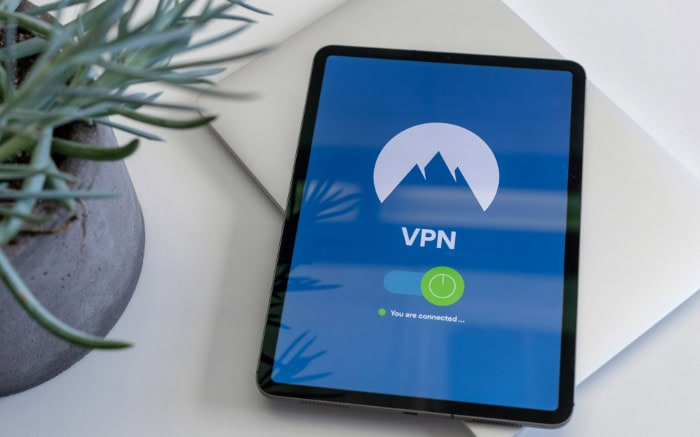Split Tunnel vs. Full Tunnel VPN: Which Fits Your Needs?

Choosing the right VPN configuration can make or break your online security strategy. Full tunnel and split tunnel VPNs represent two distinct approaches to managing internet traffic, each with its own strengths and potential vulnerabilities.
As cyber threats evolve and online privacy concerns grow, understanding these VPN options becomes crucial for anyone serious about protecting their digital footprint. Full tunnel VPNs offer comprehensive encryption, routing all data through a secure connection, while split tunnel VPNs provide flexibility by allowing selective traffic routing.
Full Tunnel VPNs Explained
A full tunnel VPN creates an encrypted pathway for all internet traffic from a device to pass through before reaching its destination. This means every piece of data, from web browsing to email and streaming, is routed through the VPN server.
The process effectively masks the user's real IP address and encrypts all data, making it difficult for third parties to intercept or monitor online activities.
How Full Tunnel VPNs Route Traffic
When a full tunnel VPN is activated, it establishes a secure connection between the user's device and the VPN server. All outgoing and incoming data packets are then directed through this encrypted tunnel.
The VPN server acts as an intermediary, receiving the encrypted data, decrypting it, and forwarding it to its intended destination on the internet. Responses from websites and online services follow the reverse path, ensuring complete encryption of the entire communication process.
Advantages of Full Tunnel VPNs
Full tunnel VPNs offer several benefits for users seeking comprehensive online protection. The enhanced security provided by routing all traffic through an encrypted tunnel offers maximum protection against potential threats, including hackers, ISP monitoring, and government surveillance.
This configuration also ensures complete privacy, as all internet activity is channeled through the VPN, allowing users to maintain anonymity and prevent their online behavior from being tracked or monitored.
Another advantage is the consistent protection offered by full tunnel VPNs. Users don't need to worry about accidentally exposing sensitive data, as all traffic is automatically secured.
Additionally, full tunnel VPNs allow users to bypass geo-restrictions, accessing content that may be restricted in their geographical location by routing all traffic through servers in different countries.
Disadvantages of Full Tunnel VPNs
Despite their strong security features, full tunnel VPNs also have some drawbacks. One significant issue is reduced speed, as routing all traffic through a VPN server can slow down internet connections, especially for bandwidth-intensive activities like streaming or gaming.
This configuration can also lead to increased battery consumption, particularly on mobile devices, due to the constant encryption and decryption processes.
Some users may experience difficulties accessing local network resources or printers when all traffic is routed through the VPN, which can be inconvenient in certain situations. Furthermore, for those who only need to protect specific activities, a full tunnel VPN might be more than necessary, potentially impacting overall system performance unnecessarily.
Common Use Cases for Full Tunnel VPNs
Full tunnel VPNs are particularly useful in several scenarios. They provide comprehensive protection when connecting to unsecured public Wi-Fi networks, making them ideal for frequent travelers or those who often work from cafes or other public spaces.
Employees accessing sensitive company data from outside the office can ensure all their online activities are secure using a full tunnel VPN.
Individuals handling confidential information or living in areas with strict internet censorship often rely on full tunnel VPNs for maximum protection. International travelers can maintain access to their home country's content and services while abroad, as well as protect their data from potential surveillance in foreign countries.
For users who frequently engage in financial transactions online, such as online banking and shopping, full tunnel VPNs offer an extra layer of security against potential cyber threats. This comprehensive protection gives users peace of mind when handling sensitive financial information over the internet.
Split Tunnel VPNs Simplified

Split tunneling is a VPN feature that enables users to direct only specific parts of their internet traffic through the VPN tunnel while allowing other traffic to bypass it. This selective routing allows for more efficient use of bandwidth and can improve overall network performance.
When split tunneling is enabled, the VPN client on a device creates two separate channels for internet traffic. One channel routes selected traffic through the encrypted VPN tunnel, while the other allows non-selected traffic to connect directly to the internet without passing through the VPN server.
Traffic Division in Split Tunnel VPNs
The process of dividing traffic in a split tunnel VPN is based on predefined rules or user preferences. These rules can be set up to route traffic based on various criteria, such as specific applications, websites, or IP addresses.
For example, a user might configure their VPN to route all banking and financial transactions through the secure VPN tunnel while allowing general web browsing to connect directly to the internet. This selective approach ensures that sensitive data receives the highest level of protection while maintaining optimal speed for less critical activities.
Advantages of Split Tunneling
Split tunneling offers several benefits that make it an attractive option for many VPN users. One of the primary advantages is improved internet speed and reduced latency for non-VPN traffic.
By allowing some data to bypass the VPN server, users can enjoy faster connections for activities that don't require enhanced security.
Split tunneling also allows for simultaneous access to both local and remote network resources. This feature is particularly useful for remote workers who need to access company resources while maintaining a connection to their home network.
Potential Drawbacks of Split Tunneling
While split tunneling offers numerous benefits, it also comes with some potential drawbacks. The most significant concern is the increased security risk compared to full tunnel VPNs.
By allowing some traffic to bypass the VPN, users may inadvertently expose sensitive data or leave themselves vulnerable to cyber threats.
Configuration complexity is another potential issue. Setting up and managing split tunneling rules can be more challenging than using a full tunnel VPN, requiring users to have a good understanding of their network traffic and security needs.
There's also the risk of data leakage if the split tunneling rules are not properly configured. Sensitive information might be sent through the non-VPN channel if the rules are not comprehensive or accurately defined.
Ideal Scenarios for Split Tunneling
Split tunneling is particularly beneficial in several common scenarios. Remote workers often find split tunneling useful as it allows them to access company resources securely while maintaining normal internet speeds for non-work-related activities.
Gamers can benefit from split tunneling by routing their game traffic through a VPN to reduce lag or access region-restricted content, while allowing other applications to use a direct internet connection for optimal performance.
Streaming enthusiasts can use split tunneling to access geo-restricted content through the VPN while enjoying faster speeds for local streaming services on their regular internet connection.
Businesses with branch offices can use split tunneling to securely connect to the main office network while maintaining direct internet access for general web traffic, optimizing bandwidth usage and reducing costs.
Lastly, users in countries with internet censorship can employ split tunneling to access blocked content through the VPN while maintaining faster connections for unrestricted local websites and services.
Comparing Security: Full Tunnel vs. Split Tunnel

When choosing between full tunnel and split tunnel VPN configurations, security considerations play a crucial role. Both approaches offer distinct advantages and potential vulnerabilities that users should be aware of.
Security Implications of Full Tunnel VPNs
Full tunnel VPNs provide comprehensive security by routing all internet traffic through an encrypted connection. This approach offers several security benefits.
The comprehensive encryption ensures that all data transmitted between the user's device and the internet is protected, making it extremely difficult for third parties to intercept or decipher the information.
Another advantage is IP address masking. The user's real IP address is hidden from websites and online services, enhancing privacy and making it harder for trackers to identify the user's location or browsing habits.
This configuration also provides strong protection against man-in-the-middle attacks by encrypting all traffic, significantly reducing the risk of attackers intercepting and manipulating data in transit.
Furthermore, full tunnel VPNs allow for a uniform security policy. With all traffic routed through the VPN, it's easier to apply consistent security measures across all online activities.
Security Implications of Split Tunnel VPNs
Split tunnel VPNs offer a more flexible approach to security, allowing users to route only specific traffic through the VPN while other data travels directly over the internet. This configuration has its own security implications.
The most notable feature is selective protection, where only designated traffic receives VPN encryption, potentially leaving some data vulnerable if not properly configured.
One benefit of split tunneling is reduced VPN overhead. By limiting VPN usage to essential traffic, split tunneling can improve overall system performance and reduce the strain on VPN resources.
This approach also provides granular control, allowing users to tailor their security settings to specific needs, applying stronger protection to sensitive activities while maintaining direct access for less critical tasks.
Potential Vulnerabilities in Full Tunnel VPNs
While full tunnel VPNs offer robust security, they are not without potential weaknesses. One concern is the single point of failure.
If the VPN connection drops, it can potentially expose all internet traffic until the connection is reestablished.
Another consideration is VPN provider trust. Users must rely completely on their VPN provider, as all their internet traffic passes through the provider's servers.
This requires a high level of confidence in the provider's security practices and privacy policies.
Lastly, there's a potential performance impact. The encryption and routing of all traffic can lead to slower internet speeds, potentially affecting the user experience, especially for bandwidth-intensive activities.
Potential Vulnerabilities in Split Tunnel VPNs
Split tunnel VPNs have their own set of potential vulnerabilities. Configuration errors pose a significant risk, as improper setup of split tunneling rules can lead to sensitive data being transmitted outside the VPN tunnel.
This requires users to have a good understanding of their network traffic and security needs.
Another concern is inconsistent security. Some traffic remains unprotected by the VPN, potentially exposing users to risks on those channels.
This can be particularly problematic if users are not vigilant about which data is being routed through the VPN and which is not.
Lastly, complex management can be an issue. Maintaining and updating split tunneling rules can be challenging, increasing the risk of security gaps if not managed properly.
Best Practices for Full Tunnel VPN Security
To maximize security when using a full tunnel VPN, users should focus on several key practices. Using a reliable VPN provider with a proven track record of protecting user privacy is crucial.
Implementing a VPN kill switch can help prevent data leaks by cutting off internet access if the VPN connection drops.
Regular software updates are essential. Users should keep their VPN client and operating system up to date to patch any security vulnerabilities.
Strong authentication measures, such as enabling two-factor authentication for the VPN account, can prevent unauthorized access.
Best Practices for Split Tunnel VPN Security
For enhanced security in a split tunnel VPN configuration, users should carefully define routing rules. This involves clearly identifying which traffic should go through the VPN and which can bypass it, prioritizing sensitive data for VPN routing.
Regular review and updates of these rules are important. Users should periodically assess and adjust their split tunneling configuration to ensure it aligns with their current security needs.
Monitoring non-VPN traffic is also crucial to ensure sensitive information isn't accidentally exposed.
Implementing additional security measures, such as firewalls and antivirus software, can help protect non-VPN traffic. This multi-layered approach can compensate for the potential vulnerabilities inherent in split tunneling.
Conclusion
Full tunnel and split tunnel VPNs offer distinct approaches to online security, each with its own set of advantages and potential drawbacks. Full tunnel VPNs provide comprehensive protection by routing all internet traffic through an encrypted connection, ensuring maximum privacy and security for all online activities.
This configuration is particularly beneficial for users handling sensitive information or accessing public Wi-Fi networks. However, it may impact internet speeds and overall performance.
Split tunnel VPNs, on the other hand, allow for more flexibility by selectively routing traffic through the VPN. This approach can improve performance for non-sensitive tasks while still protecting critical data.
It's especially useful for remote workers who need to balance access to company resources with general internet use. However, split tunneling requires careful configuration to avoid potential security gaps.
Choosing between these two VPN configurations depends on individual needs, priorities, and technical expertise. Users must weigh the trade-offs between comprehensive security and performance, considering factors such as the nature of their online activities, the sensitivity of their data, and their comfort level with managing more complex network settings.
Regardless of the chosen configuration, implementing best practices such as using reputable VPN providers, keeping software updated, and regularly reviewing security settings is crucial for maintaining a robust online security posture.


